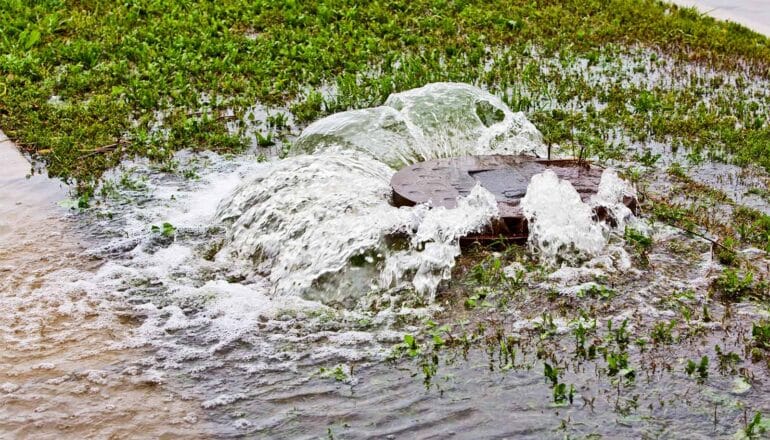
“Sunny day flooding,” which occurs during high tides, increases the levels of fecal bacteria in coastal waters, a new study shows.
While the elevated bacteria levels in the coastal waters tend to dissipate quickly, the findings suggest policymakers and public health officials should be aware of potential risks associated with tidal flooding.
“Historically we see the highest levels of fecal bacteria contamination in coastal waterways after it rains, because the rain washes contaminants into the waterways,” says Natalie Nelson, an associate professor of biological and agricultural engineering at North Carolina State University and corresponding author of the paper published in the journal GeoHealth.
“Due to sea level rise, we’re seeing an increase in flooding in coastal areas at high tide—even when there isn’t any rainfall. We wanted to see whether sunny day floods were associated with increases in fecal bacteria contamination in waterways.”
For the study, researchers collected water samples every day for two summer months at three sites along a single waterway in coastal North Carolina. Two perigean spring tides occurred during the two-month sampling period. Perigean spring tides are tides characterized by especially pronounced high and low tides, caused by the moon’s gravitational pull.
The researchers increased their collection of samples at each monitoring site on the days of the perigean spring tides, to capture changes in water quality throughout the tidal cycle. During the high-water levels of the perigean spring tides, water also came up out of some local storm drains and caused minor flooding. The researchers took samples of those floodwaters as well.
“We found that the floodwaters themselves had relatively high levels of fecal bacteria,” Nelson says. “To be clear, these floods were inches deep; we’re talking about very minor flooding as tidal waters pushed up through the storm grates. However, we’ve seen children playing in these sort of sunny day floodwaters, and the levels of fecal bacteria we detected were above the levels deemed safe for recreational waters.”
“Our findings with regard to the coastal waters were more nuanced,” says lead author Megan Carr, a PhD student at NC State. “On the one hand, we did see higher concentrations of fecal bacteria in coastal waters as the floodwaters and perigean spring tides receded.
“On the other hand, we did not see this in every instance and in every location—and we also found that the higher concentrations of fecal bacteria usually only lasted for a few hours.”
In other words, perigean spring tides do raise some concerns about fecal bacteria and water quality in coastal waters, but they don’t appear to cause concentrations of fecal bacteria at the same level as stormwater runoff caused by rainfall.
“It’s important to note that these results are from samples that we took in one area along a large waterway,” Nelson says. “The results are likely to vary significantly, depending on the size of the waterway. For example, post-flood contamination could last longer in waterways smaller than the waterway that we sampled. That’s something that would benefit from additional research.
“Sea levels are going to continue rising for the foreseeable future,” Nelson says. “So we are definitely going to see more sunny day flooding, and those floods will be getting worse. We need to continue studying the impact that these tidal floods have on our water quality, because the more we understand, the better able we will be to make informed decisions about public health and safety.”
Additional coauthors are from NC State and the University of North Carolina at Chapel Hill.
The National Science Foundation and the US Geological Survey Southeast Climate Adaptation Science Center funded the work.
Source: NC State
The post ‘Sunny day flooding’ increases fecal bacteria in coastal waters appeared first on Futurity.
from Futurity https://ift.tt/uem8aRg
No comments:
Post a Comment